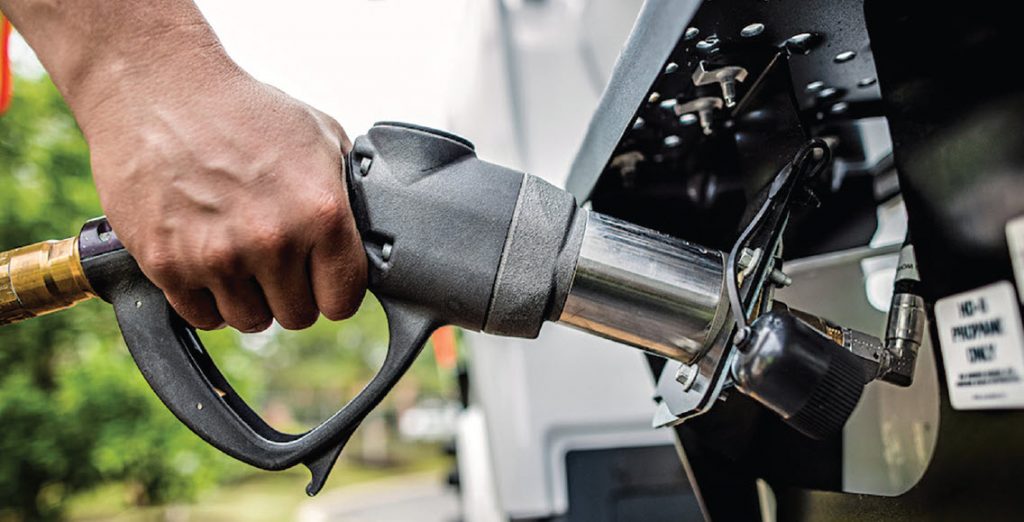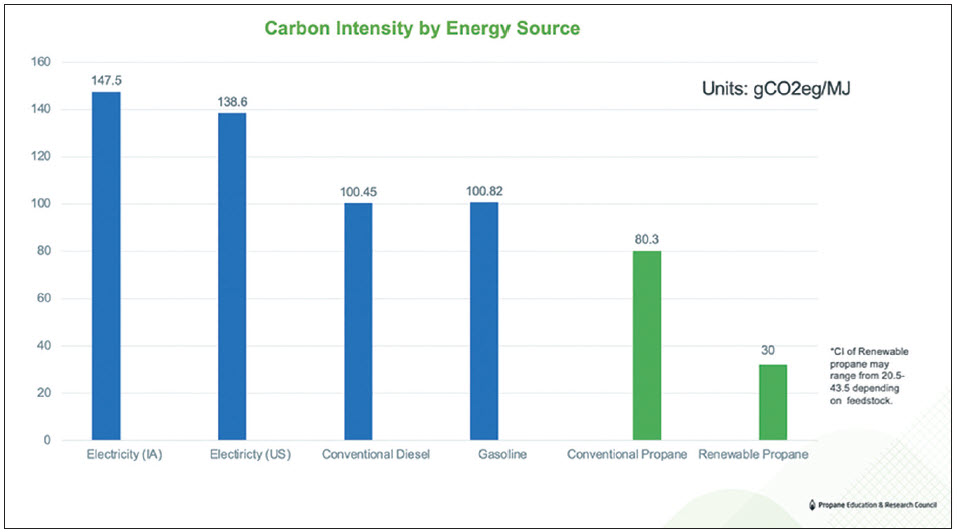Chances are, you’ve heard much more about renewable fuels lately. Alternative energy options like renewable diesel have earned plenty of headlines for their environmental benefits, but many have yet to learn about another promising alternative: renewable propane.
Like renewable diesel, renewable propane is poised to play an increased role in powering vehicles and heating homes more sustainably in the years to come. But what exactly is renewable propane? We’ve got answers to the five most commonly asked questions about renewable propane.

- What is renewable propane? Renewable propane is a fuel that can be made from a variety of feedstocks, including soybean oil, used cooking oil and animal tallow. The most common form of renewable propane today is a byproduct from the same process that creates renewable diesel from soybean oil. The use of soybean oil in renewable propane and renewable diesel will likely mean increased opportunities for soybean growers in the future.
- How is renewable propane different from conventional propane? Although both are chemically identical, renewable propane is made from biomass-based feedstocks, while conventional propane is produced from liquid components recovered during natural gas processing and the process of refining oil into gasoline. Both conventional and renewable propane are reliable, portable, clean, low carbon-based energy products that can be used to reduce your carbon footprint, but only renewable propane is made entirely from sustainable raw materials.
- How is renewable propane used? Renewable propane can be used in all the same applications that the more traditional propane molecule is used today. With incentives like the California Low Carbon Fuel Standard (LCFS) driving motor fuel applications versus general use (i.e. home heat), renewable propane is used today primarily to power truck fleets. Because of the numerous incentives California legislation provides for the use of renewable fuels, the state is currently a major user of renewable propane. Renewable propane has not been widely adopted yet.
- How does renewable propane compare with other energy sources? Renewable propane has lower carbon intensity than conventional propane and many other energy sources. According to the Propane Education & Research Council (PERC), renewable propane can have a carbon intensity that may range from 20.5 to 43.5 grams per megajoule (the standard unit of greenhouse gas emissions measurement). Conventional propane, gasoline and conventional diesel fall in a much higher range. The smaller the number, the better the energy source is for the environment.
- What could renewable propane hold for the future of transportation? U.S. fuel processors are already making millions of gallons of renewable propane, but a larger move toward cleaner liquid fuels like renewable diesel could lead to an increase in renewable propane production. The WORLD LPG ASSOCIATION estimates that by 2050, renewable propane could meet half the world’s demand for propane.

At CHS, we’re keeping track of the opportunities that renewable propane and renewable diesel could hold for our customers in the future.
Have more questions about renewable or conventional propane? Email me at andrew.ernst@chsinc.com.
